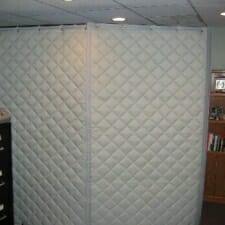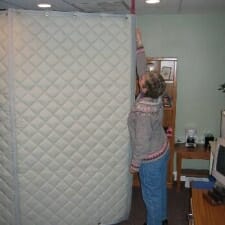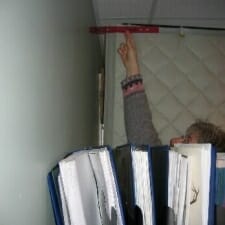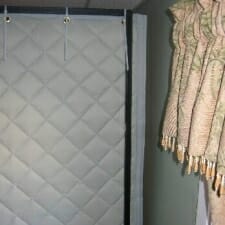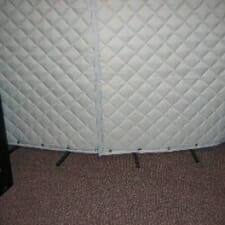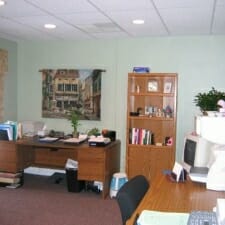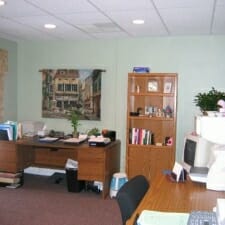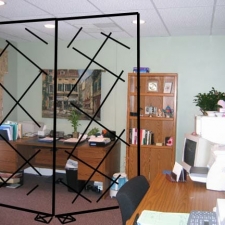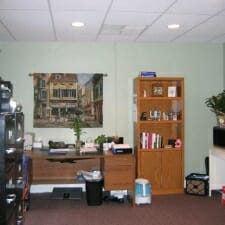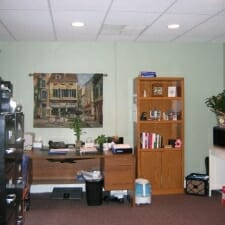Zamboni's office
Moveable Office Wall
By Ted Weidman
Office spaces commonly pose interesting and unique acoustical situations that usually require a little creativity as well as a little flexibility. I received a call from a woman who had her own office for years, but with the company expanding and the amount of space remaining constant, a co-worker moved a desk into the room. Because of the nature of their work, the women decided to look for a way to put some kind of sound barrier between them.
The solution had a few prerequisites that needed to be met in order to even be a possibility for the room. The first was that the sound barrier could not be a permanent addition to the room. Because the company was renting the space, the product that was to be installed would have to be easily removable. The second prerequisite was that it had to be aesthetically acceptable. The women did not want to have an eye sore to work around all day.
After looking at the website, one of the women decided to call for some advice. When I talked to her, I informed her of our BSC-25 acoustical quilted curtain screens. These are custom fabricated curtains with a black 1” steel tube frame that can sit on the floor. Because of the 1/8” thick Mass Loaded Vinyl in the center of the curtain, they block the same amount of sound as a normal 2×4 wall with sheetrock on either side.
After sending the ladies samples as well as a more decorative color selection for the facing, they decided to take measurements for a two-screen quote. I put together a simple little sketch to show the women approximately where to measure and E-mailed it to them. It was decided that instead of the standard PVC facing which is most commonly used in industrial applications, that these panels would be faced with the more decorative, softer looking Sailcloth.
The screens were fabricated with the curtain overlapping the frame so one panel could attach to the next. Eliminating air gaps between and around the panels will greatly improve their performance. It was not until the screens arrived that the ladies noticed a problem. Because this was an old building, the ceiling and floor were not level. It became apparent that the floor had settled quite a bit leaving a much larger gap between the top of the panels and the ceiling than originally expected. The angle of the floor also pulled the top corner of the screen away from the wall near the ceiling.
Overall, the ladies reported that the panels worked well, but because of the large air gaps around the perimeter of the screens, they would have liked to have the wall block a little bit more sound. Unfortunately unless the ladies took VERY good measurements or hung the panels from the ceiling, these air gaps could not have been avoided.
If you have any questions about this installation or would like to receive similar product samples or literature, please feel free to contact me at [email protected] or 800.448.0121 (ext 25)



